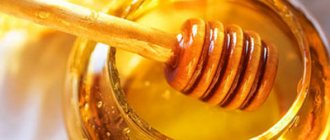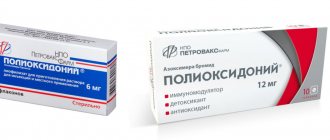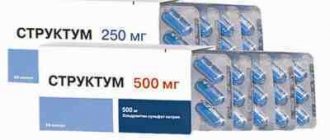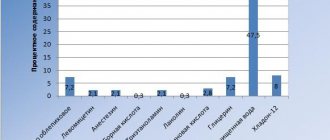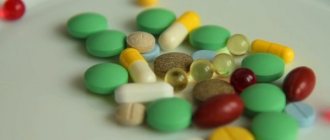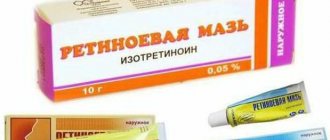What it is
Boric acid, or otherwise orthoboric acid, is a substance with weak acidic properties. That is, unlike sulfuric acid, it is impossible to get burned just by lightly touching it. But this does not mean at all that it is safe.
Externally, it is a white crystalline powder that has no taste or smell. It dissolves easily in water, but it dissolves faster in warm water. When heated slowly, it turns into metaboric acid, and when heated quickly, it turns into boron oxide.
It occurs in nature in the form of the mineral Sassolina, which is mined in lagoons of volcanic origin and near extinct volcanoes. But its reserves in nature are quite limited. And therefore, the overwhelming amount of boric acid is produced artificially, by mixing sodium tetraborate with hydrochloric acid.
Release form
Boric acid can be purchased in pharmacies in three forms:
- crystalline powder;
- ointment;
- alcohol solution for external use.
Pure boric acid is sold in powder form. But it cannot be applied to the skin in this form; it is necessary to prepare a solution, the proportions of which depend on the scope of application. In the case of an alcohol solution, there is only 0.3 g of boric acid, and the rest is ethyl alcohol and auxiliary substances. That is, it is a ready-to-use solution. The ointment contains 5% acid and petroleum jelly and is suitable for rubbing into the skin.
Replacement with medications
- For ear diseases, antibacterial: “Tsipromed”, “Otofa”, “Fugentin”.
- Anti-inflammatory - "Otipax", "Otinum".
- For eye diseases: chloramphenicol, dexamethasone. For retinal dystrophy: emoxipin, taufon, actipol.
- For dermatitis: “Eplan”, “Skin-cap”, “Zinocap”.
Careful use of boric acid helps improve health, and also helps solve problems in some everyday issues, while the drug can be freely purchased at the pharmacy. By following safety precautions and only as prescribed by a doctor, this medicine will bring the desired effect.
In medicine
It’s not for nothing that boric acid is sold in pharmacies. It is actively used as an antiseptic, antiparasitic and antifungal agent. Therefore, boric acid powder, boric ointment or alcohol solution can be used to combat the following diseases:
- pediculosis;
- fungal skin diseases;
- otitis;
- skin eczema;
- pyoderma,
- Diaper rash.
To treat otitis media, an alcohol solution is needed, as it will create additional heat.
Using boric acid in the ear looks like this:
- Lie on your side and place 3 drops from a pipette into the sore ear.
- Lie like this for about 15 minutes.
- Cover the sore ear with cotton wool.
- Repeat the procedure 4 times a day.
If the acid is used to treat conjunctivitis, it should be exclusively an aqueous solution of boric acid in a ratio of 2 parts powder to 100 parts water. This solution should be used to rinse the sore eye.
Boric ointment is used to treat head lice. You need to apply it to dry, dirty hair and cover it with a plastic bag. After 2 hours, comb out the ointment along with the dead parasites and their nits. Yes, there are now many more effective and safer products, but none of them compare with boric ointment in price.
It can be applied exclusively externally, without getting on the mucous membranes. And for pregnant women and children under 3 years of age, boric acid is contraindicated even for external use. Since the harm that it can cause to the formation of the fetus and the reproductive system has been proven. Boric acid is also contraindicated for people with kidney disease due to its long-term elimination from the body.
Today it is worth thinking about the relationship between the harm acid causes to the body and the benefits it brings. For example, for boric acid to work, its minimum concentration of 2% is required, but potassium permanganate and Furacilin only need 0.01%, but the most modern antiseptic is chlorhexidine - only 0.005% is enough to be effective.
Effect on the human body
In case of overdose, adverse reactions such as skin rash, irritation, itching, nausea or vomiting may occur. Convulsions, headaches, and shock are possible.
With prolonged use, stomatitis, tissue swelling in the treated areas, and eczema may develop. Disorders of the menstrual cycle, convulsions, and anemia may develop.
Before use, it is imperative to consult a doctor, as individual intolerance or a history of contraindications is possible.
Once inside, the medicine is easily absorbed from the intestines into the blood. And also a repeated effect is obtained from the skin and mucous membranes. In the blood vessels, the acid is not neutralized, but moves unchanged, mainly excreted by the kidneys (about 90%), and the rest is rejected by the liver with bile (10%).
This substance is excreted slowly, approximately half is released after 30-35 hours, and the other part can remain in the body for up to 5 days.
The substance irritates the mucous membranes, destroys the kidneys and negatively affects the nerve cells of the brain.
Important! In children, due to an immature body and a weak immune system, it can cause poisoning and lead to intoxication.
We invite you to familiarize yourself with Central serous chorioretinopathy (CSC): symptoms and treatments, degrees, what it is and how to treat, causes
The elements contained in the drug do not significantly cause any third-party effects. But if the patient has an overdose due to exposure to open wounds, mucosal injury, or prolonged use, this can cause the phenomenon of chronic intoxication.
It is expressed by the following symptoms:
- nausea;
- vomit;
- swelling of tissues;
- elevated temperature;
- changes in the central nervous system;
- pain inside;
- rash;
- convulsions.
Antiseptic and insecticidal agent. Causes antimycotic, antibacterial, astringent, antiparasitic, fungistatic, antipediculosis effects.
Side effects associated with the use of Boric acid are expressed in the form of symptoms of acute and chronic intoxication:
- nausea and/or vomiting;
- diarrhea;
- skin rashes;
- headache;
- confusion;
- desquamation (scaly peeling) of the epithelium;
- reducing the volume of urine output (oliguria);
- development of a state of shock (rare).
Cases of drug interactions for external use have not been described.
In the chemical industry
There is also technical boric acid. It is widely used in chemical laboratories. Combination preparations are often made on its basis. It is involved in the process of nickel plating of metals. It is also used in buffer solutions. Here are some more options for using it in the chemical industry:
- production of paints and glazes for ceramics;
- metallurgy;
- electrotype;
- paraffin production;
- nuclear power;
- woodworking compounds;
- production of surfactants.
Boric acid is also used in the production of glass, fiberglass and ceramics on an industrial scale. Thanks to it, the glass becomes stronger and does not delaminate, which occurs due to a decrease in the melting point.
Fire retardant properties
Relatively recently, the fire-retardant properties of boric acid and sodium tetraborate, or simply borax, were discovered. Using solutions based on these substances it is much easier to extinguish fires.
This happens because the solution of boric acid or borax prevents oxygen from reaching the combustion site, which negates the fire. But even if combustion continues to occur, thanks to borax or acid, much less harmful flammable fumes are released, but only carbon. That is why these substances are actively used in professional fire fighting.
Boric acid - instructions for use
This compound is used for agronomic purposes in the following forms:
- powdery;
- liquid concentrated solutions.
For irrigation, fertilizer, and fertilizing, different proportions of the substance are used in relation to the solvent - water. The ratio depends on the condition of the plant and the goals of the procedure. Can be used in combination with other elements: zinc, manganese.
Foliar feeding
Spraying the above-ground part of the plant with a solution of boric acid is an effective measure. The ratio of the product is 1 liter: 0.1 mg of powdered substance.
Feeding is carried out in three phases:
- initial processing is performed at the stage of peduncle development;
- the second - at the stage of flower opening;
- the third is at the stage of fetal emergence.
In some circumstances, boron solution is mixed with other agents. For such spraying, a small dosage of the element is required (5-6 g per 10 liters of water).
Foliar treatment with boric acid is carried out completely excluding direct sunlight (burns), optimally on a cloudy day or in the evening. If the procedure is carried out on a hot day, then the tree or shrub must first be doused with water.
Root feeding
Fertilizing with boric acid at the root is done as infrequently as possible. It is important to make sure there is a deficiency of this substance.
Root enrichment with boron is used for:
- planting decorative flower flora;
- under conditions of germination on admixtures of peat and sand;
- on podzolic, turfy soils.
Preparation of the mixture in the following ratio: 0.1-0.2 g of powdered product is diluted in 1 liter of water. However, before using the mixture for spraying, each plant is doused with water in large quantities to prevent chemical exposure to the leaves.
Food industry
Here it is known as food additive E284. Used as a preservative for perishable animal products or fermented products such as beer or kvass. But in Russia it is prohibited for use in food, as it is officially recognized as toxic to the human body. But they continue to use it externally in Russia.
But in the European Union countries, canning powders are freely sold, which, along with spices, also contain boric acid. Despite this, it is worth remembering that the drug, when used orally, accumulates in the body and in large quantities can cause difficulty in the functioning of the kidneys of the heart and abnormal development of the fetus in pregnant women.
Getting inside
Strict adherence to the instructions for boric acid is necessary. Neglecting this is fraught with dangerous consequences both for health and for life in general. And this is despite the fact that boric acid is not a highly toxic substance.
Prolonged contact with it, much less ingestion in its pure form, should not be allowed. When ingested in large quantities or onto the mucous membrane, boric acid poisoning occurs. The consequence will be the following manifestations:
- vomit;
- diarrhea;
- convulsions;
- ulcers.
If an amount of 2 to 20 g is ingested, it can even be fatal. Such a strong fluctuation in the amount of the lethal dose is associated with individual characteristics of the body, such as age, weight and health status of the person.
In the fight against cockroaches
The use of boric acid against cockroaches and ants is also well known. This is perhaps the most famous folk insecticide. To make it at home, you need to prepare insect bait so that they eat it. Although this acid is odorless and tasteless to humans, it repels insects with its smell. Therefore it is necessary to disguise it. The recipe for boric acid as a household insecticide looks like this:
- luring substance (egg, honey or sugar) - 2 tablespoons;
- a bag of boric acid;
- 1 tbsp. spoons of flour;
- a couple of drops of oil (to fight off the smell of boron).
You need to mix these ingredients and roll the resulting dough into lumps, and then place them in secluded places in the apartment. Insects will eat them and receive a lethal dose of boric acid. It affects the nervous system of insects, making their continued existence impossible.
If you call the sanitary and epidemiological station, they will treat the room for free with nothing more than a solution of boric acid. More modern and expensive insecticides are already used by private companies. The undoubted advantage of this method is the low cost of boric acid and its easy availability. But, unfortunately, many modern insects have already developed a strong immunity to this drug.
For acne
For severe acne, this remedy, proven by generations, is also indicated, which costs a penny in the pharmacy.
Boric acid for acne on the face is a publicly available method, but it is first important to make sure that the body is not hypersensitive to the active substances. Dermatologists advise using an alcohol tincture, which can effectively treat visible foci of pathology. It will be possible to completely get rid of acne in the shortest possible time, since the medicinal composition has a drying, anti-inflammatory, and bactericidal effect.
Application in agro-industry
Another area of its application is caring for vegetables in the garden. Some of the most favorite vegetable crops to grow in Russia are cucumbers and tomatoes. For the sake of their exquisite taste, gardeners endure all the difficulties associated with their cultivation.
This includes the construction of greenhouses, tying, and careful adherence to the watering regime, and, of course, fertilizing. This is precisely what boric acid is used as a fertilizer. In addition, it is suitable as a fertilizer for the following garden crops:
- potato;
- beet;
- strawberry;
- grape;
- pears;
- apples.
The fact is that boron is an important microelement for their growth, which helps to absorb other important macro- and micronutrients.
It is also able to fight microorganisms that harm plants. Therefore, by spraying vegetables and fruits with boric acid, you can kill two birds with one stone.
To prepare fertilizer from this acid, you need to make a solution by diluting half a teaspoon in a glass of warm water. And then you can fertilize in two ways: by watering with a solution directly under the root or by spraying. You can fertilize the soil itself with this solution; the concentration of boron in the soil makes it more fertile. But don’t be too zealous, because excess boron in the soil is harmful to plants.
Eye wash solutions
There is a lot of controversy about what you can use and how to properly wash your eyes. Some people advise using only folk remedies, some trust the advice of doctors, and some, sometimes, act according to their own convictions.
Therefore, in order to have an idea of what drugs and other means are used to wash the eyes, it is necessary to familiarize yourself with their properties and the correct methods with which you can wash the eyes.
Basically, the controversy is around the following washing solutions based on:
- Furacilina;
- Medicinal plants;
- Salt water;
- Hydrogen peroxide;
- Boric acid.
Furacilin based solution
Furacilin is the safest antibiotic. Suppresses inflammatory processes of any nature occurring on the membranes of the visual apparatus. Therefore, among the home remedies, it is best suited for rinsing the eyes.
To obtain the greatest effect, you need to know the rules that must be followed when washing with furatsilin solution and the proportions necessary for its preparation.
The solution is prepared as follows:
- Take a couple of tablets of the drug and completely dissolve in a glass of boiled water. After this, the resulting solution is allowed to brew for about ten minutes.
- Then it is passed through gauze. This is done as a precaution to ensure that small particles do not get into your eyes unless they are completely dissolved.
- This product must be stored in a cool place and no more than two days from the moment it was prepared.
The method of using this product is very simple:
- A cloth, preferably sterile, is soaked in a furatsilin solution and the eye is wiped. Carry out rinsing at least five times during the day.
- Furacilin effectively relieves inflammation, tension, and fatigue from the eyes, and also fights various eye lesions, such as conjunctivitis.
Chlorhexidine based solution
Chlorhexidine is a powerful antiseptic used in various fields of medicine. Its widespread use is due to the active component of the drug – chlorhexidine bigluconate. It is also used in ophthalmology and is especially often recommended in the fight against conjunctivitis.
It is not recommended to prepare it yourself due to the increased aggressive properties of its constituent components when interacting with mucous membranes. You can purchase a ready-made aqueous solution at a pharmacy, available in 0.02% or 0.05% concentration.
Rinsing is done with the eyes closed using a cotton pad. In this case, you need to rinse your eyes with movements directed from the outer corner to the corner located closer to the bridge of the nose. This is necessary to wash out the pus.
Attention! The product should not get on the surface of the eyeball. If this happens, quickly rinse the eye with plain water.
It is necessary to wipe the sore eye 5-6 times during the day. This solution is not recommended for use by persons prone to allergic reactions.
Solution based on medicinal plants
There are many recipes for decoctions of medicinal plants for washing the eyes. Chamomile, black tea leaves, bay leaves, aloe juice, tea rose petals, potatoes, dill and other plants are often used to prepare them. The most popular among them are chamomile infusion and tea leaves.
Chamomile decoction
Everyone knows that chamomile has many beneficial properties. Therefore, an infusion from it is also effective for washing for various eye diseases.
Instructions:
- To prepare chamomile infusion you will need one teaspoon of ground plant material and 250 milliliters of boiling water.
- These two components are mixed, and the resulting broth is infused under a closed lid until it becomes warm.
- When it is infused, it is filtered.
- After preparing this infusion, it can be used. To do this, take cotton swabs, soak them in the broth and wash the eyes from the outer edge to the inner.
This product is also used for washing with lotions. Chamomile infusion effectively fights inflammation, helps with conjunctivitis, and relieves redness and fatigue from the eyes.
Tea brewing
Brewed tea of medium strength is usually used. Before use, it must be cooled so that the tea leaves become warm.
Tips for use:
- To wash your eyes with tea, you need to use a cotton swab soaked in this solution and move it from the outer edge to the opposite.
- Wipe each eye only with a separate cotton swab.
- Repeat this procedure several times.
- In this case, you need to ensure that the tea gets on the inflamed area.
- You need to tilt your head to the side.
- After this, dry your eyes with a soft paper napkin, but not dry.
- You can wash your eyes with tea only if it does not contain additives, flavors or other impurities.
A very effective remedy that is used to wash the eyes. It is prepared using salt, which must be dissolved in water. After it is completely dissolved, it is ready for use.
The method of using saline solution is no different from the above methods.
Penicillin-based solution
Penicillin is an antiseptic that also has disinfectant properties. Recommended for conjunctivitis.
Instructions:
- In order to prepare a penicillin solution, you need to pour warm boiled water into a penicillin bottle. Shake well. All! The solution is ready.
- Wash your eyes with this solution, lubricating them with cotton wool several times during the day.
- A separate cotton swab is used for each eye to prevent the possibility of re-infection.
Miramistin based solution
There is no need to prepare Miramistin solution yourself, as it is available in every pharmacy. It is applied to a cotton pad and wiped over the affected areas of the visual apparatus.
A solution based on Miramistin is used for conjunctivitis, as well as after surgical operations.
Hydrogen peroxide solution
There are several recipes for preparing solutions using hydrogen peroxide. But their effectiveness has not been proven. In addition, you should always take into account the fact that this drug has properties inherent in acids. Therefore, if it gets on the skin or eyes, a chemical burn is possible.
Hydrogen peroxide should not be used to wash the visual apparatus.
Boric acid solution
To prepare it, it is best to take medical boric acid. It must be dissolved in boiled or distilled water. One teaspoon will be enough.
Rinsing with boron solution is carried out by applying cotton swabs soaked in it to closed eyelids. If pain is detected in both eyes, you must use each tampon individually and only once. Boric solution is suitable for washing eyes during conjunctivitis and other inflammatory processes.
Cosmetics
In cosmetics such as baby powder, creams and soaps, boric acid acts as an emulsifier. That is, it helps to achieve a uniform consistency when mixing two substances that do not initially mix with each other, for example water and oil.
Those who are prone to allergic reactions, as well as children and pregnant women, should be wary of cosmetics containing boric acid. It’s easy to identify it in the composition - it will be listed under one of these names:
- boric acid;
- orthoboric acid;
- boric acid;
- acidum boricum;
- E-284.
In addition to the emulsifying properties of boric acid, its antiseptic qualities are also used here. That is, it also acts as a preservative for perishable components of natural origin in cosmetics.


